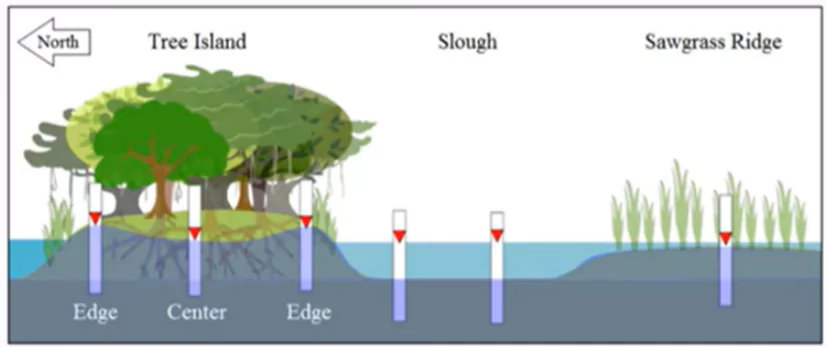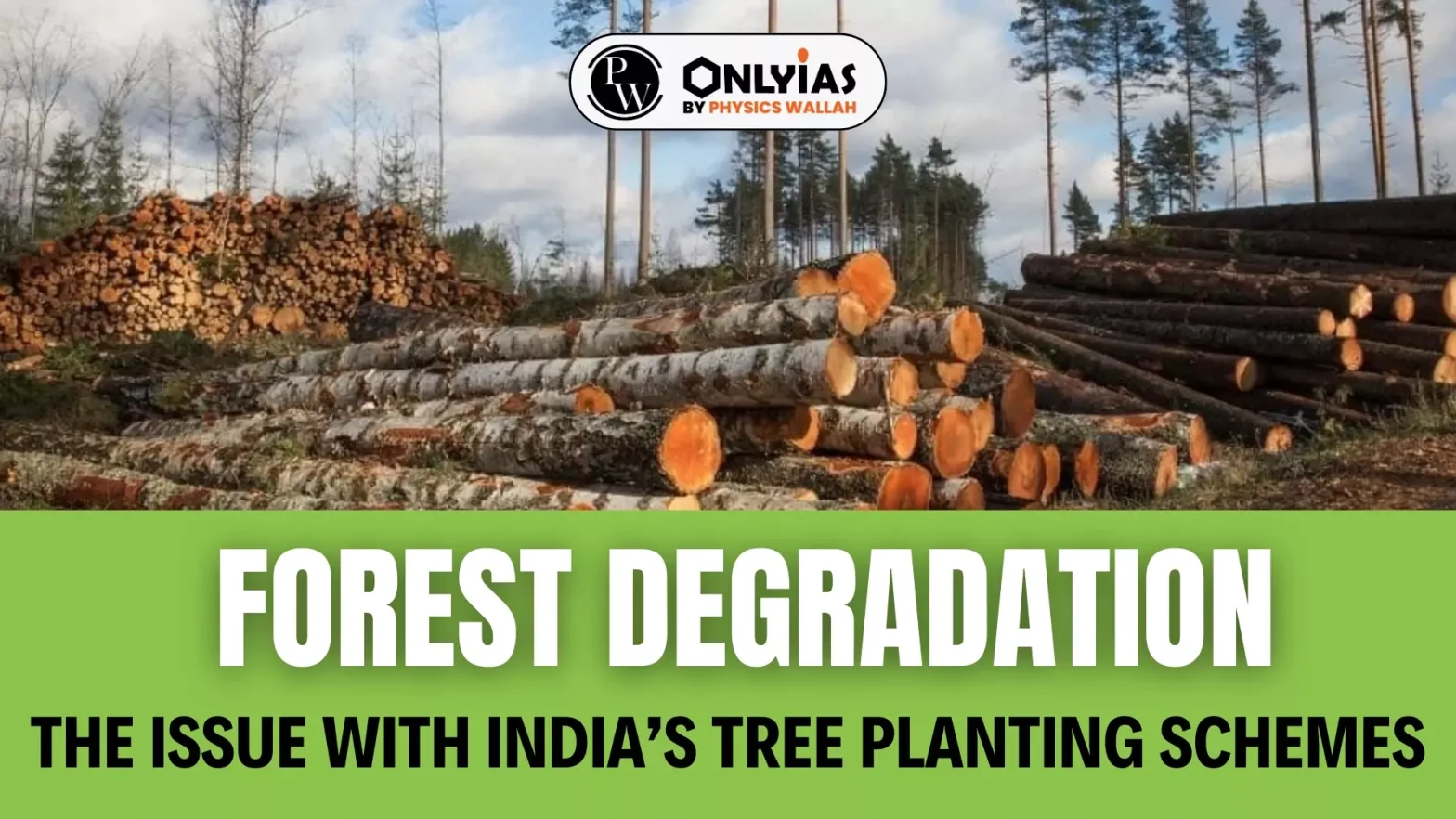The exploitation of forest resources due to uncontrolled and unsustainable practices has degraded forest landscapes, emphasizing on reoriented innervations and strategies that can help to bring changes in the ecological systems of forests, and create resilient forests that have diverse capacities and capabilities.
| Relevancy for Prelims: Forest Degradation, Tree Plantation for Healthy Environment, Carbon Sequestration, Van Mahotsava, Carbon Sink, the One Trillion Project, the “Great Green Wall of China”, the “10 Billion Tree Tsunami”, the “Bonn Challenge, Land Degradation And Desertification, Paris Agreement, 2021-2030 as a Decade of Ecosystem Restoration by the United Nations, monoculture, etc.
Relevancy for Mains: Forest Degradation and Tree Plantation- India’s Contribution and Statistics, Need, Significance, Challenges, Actions Taken and Measures Need to be Taken, etc. |
High Forest Degradation
- Concerning Statistics: The World Bank estimates that the world has lost about 10 million square km of forests since the start of the 20th century.
- Action Taken: The emphasis on forest restoration approaches was the main purpose of declaring the decade of 2021-2030 as a Decade of Ecosystem Restoration by the United Nations.
- Target: Restoration of 350 million hectares of degraded land to generate $9 trillion in ecosystem services and sequester an additional 13 gigatons-26 gigatons of greenhouse gases from the atmosphere.
Enroll now for UPSC Online Course
Tree Plantation for Healthy Environment
- A Method: It is one of the proven methods to support and sustain biodiversity with spectacular potential to address climate-related crises and other environmental challenges.
- Includes: Biological carbon sequestration, as a mechanism to store and remove carbon dioxide from the atmosphere.
- Action taken in India: Keeping this indispensable role of trees in maintaining the ecological balance, the then Indian Agriculture Minister, K.M. Munshi launched the Van Mahotsava (‘festival of trees’) programme in July 1950.
- Since then, India has been religiously celebrating this programme of tree planting, annually, in the first week of July.
- To some extent, these efforts have been successful not only in motivating people but also in bringing tangible results that include improving the forest area.
- Challenges with such Drives: The neglect of ecology and locality with little involvement of people in various tree planting programmes has been a major concern of environmentalists and scientists in recent years.
- Adverse Impact on Ecosystem: As per Joseph Veldman Sstudy, except for deforested areas, tree planting in certain locations such as grasslands and animal habitat destroys plant and animal habitats and can damage ecosystems, increase wildfire intensity and exacerbate global warming.
- Various experts expressed scepticism in considering grasslands as deforested and degraded lands for selecting them for tree planting by rehabilitation; these lands are highly productive and biodiverse, supporting many livestock and people.
Fancy Drives, Catchy Slogans
- With catchy slogans, glamorous drives and headline-grabbing campaigns, the programmes of tree planting, both globally and at a national level, have attracted huge media attention and the involvement of people including various organisations to fulfil their objectives.
- Examples: Planting drive in various Indian States, the “One Trillion Project” of the World Economic Forum, the “Great Green Wall of China”, the “10 Billion Tree Tsunami” of Pakistan or the “Bonn Challenge” to restore 150 mn hectares of degraded and deforested landscapes by 2020 and 350 mn hectares by 2030.
- Criticism: Limited community participation, a lack of adequate post-planting measures and for promoting monoculture.
- Thereby proving less effective for carbon sequestration and biodiversity development.
Check Out UPSC CSE Books From PW Store
India’s Achievement
- Paris Agreement: In 2023, the Indian Prime Minister said that ‘India is the only G20 country that has fulfilled its commitments under the Paris Agreement’.
- Carbon Sink: In the Rajya Sabha, in February 2024, the Union Minister of State for Environment, Forest and Climate Change said that ‘India has achieved an additional carbon sink of 1.97 billion tonnes of CO2 equivalent’.
Challenges faced by India
- Following challenges are mentioned below that pose problems for India’s initiatives to restore 26 million hectares of degraded forests by 2030 and to improve forest cover using steps that include tree planting.
- Encroachment: In India, nearly 10 million hectares of its forests are under encroachment.
- High Dependency: Nearly 27.5 crore of people are dependent on forests for subsistence.
- Non-Forest Purpose Usage: Nearly 5.7 million hectares of forest land have been lost for non-forestry purposes since Independence.
Way Forward

- In the background of the criticism of mass planting drives, India needs to:
- Introspect the strategies
- Focus on adequate finances
- Public awareness campaigns, Social media, and incentivised community participation
- Technical considerations
Enroll now for UPSC Online Classes
Conclusion
Planting saplings alone does not fulfil the multifarious expectations unless provision for adequate post-planting measures and monitoring of tree growth have been taken. There is a need to focus on a more rewarding approach of restoration and other alternative low-cost approaches such as tree islands which involve planting in small patches or islands.
![]() 20 Jul 2024
20 Jul 2024


